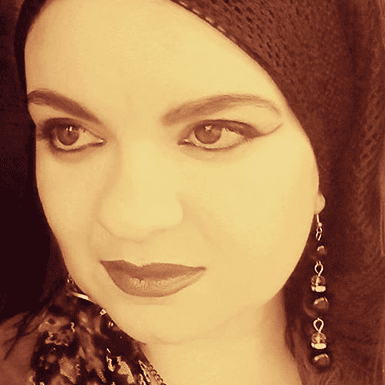No matter how prevalent refugee stories have become in the media, the dissociation between the terminology and the people keeps growing. Jehan Bseiso and Becky Thompson address this absence of humanity through the anthology “Making Mirrors: Writing/Righting by and for Refugees”. Indeed, this collection dispels the limited concept of the term “refugees” by providing the missing connection which the editors of this collection describe thus: “we make mirrors to reflect imagistic connections that allow us to see ourselves in each other.”
Bseiso and Thompson make an important observation. “Becoming a refugee is an experience that is impossible to locate on a map, yet seared into consciousness.” All the writers included in this anthology portray this reality of inhabiting this incongruous space where their existence is in perpetual conflict, yet teeming with sentiment that is common to refugees and non-refugees alike.
For the refugees, however, emotions are constantly defined by their experience of uprooting, migration and exile. There is no end to incarceration for a refugee, as the homeland becomes a distant geographical space while its memory remains tangible. Meanwhile, during the voyage between one land and another, refugees are witness to additional trauma which is routinely summarised to accommodate news dissemination and consumption.
READ: The Palestinian Authority in the West Bank. The Theatrics of Woeful Statecraft
![A Palestinian man walks under the symbolic key, that stands as a mark to the 60 year anniversary for the Palestinian Nakba (Day of Catastrophe), in the Aida refugee camp near the West Bank town of Bethlehem on July 6 2009. [Najeh Hashlamoun]](https://i0.wp.com/www.middleeastmonitor.com/wp-content/uploads/2019/06/NA_BE00-11.jpg?resize=533%2C800&ssl=1)
A Palestinian man walks under the symbolic key, that stands as a mark to the 60 year anniversary for the Palestinian Nakba (Day of Catastrophe), in the Aida refugee camp near the West Bank town of Bethlehem on July 6 2009. [Najeh Hashlamoun]
The recurring forced displacement of Palestinian refugees is depicted by Zeina Azzam who says of her friend, “I never saw her again/ but I know that she also/ learned to travel lightly.” A refugee’s sense of belonging is easily shifted and best manifested in what the refugee chooses to travel with, in terms of material possessions and memory. Both constitute common ground as regards refugee trajectories, especially when the sense of belonging is inhumanely ripped away and people seeking refuge from war and trauma are left with an additional longing that is exacerbated by social and political isolation.
Zeina Azzam ponders: “When will we see the colours of our land?” Meanwhile, Zeina Hashem Beck remarks: “Bahr is how we were taught to measure poetry/ bahr is how we’ve stopped trying to measure sorrow, back home.” The verses demonstrate an innate tendency to look back to the place where memory belongs, and to where one belongs, intertwined with that same memory. This feeling is magnified with the realisation that, for the refugee, an absence of belonging is both a prelude and a permanent reality.
For refugees who made the perilous Mediterranean journey to reach safe haven, memory is imbued with layers to tragedy. Reflecting on how the Mediterranean Sea has become a burial site, Bseiso asks, “How do we overcome war and poverty only to drown in your sea?” The answer, of course, lies in addressing warfare and exclusionary politics. Yet the refugee speaks out of human wonder and yearns for answers and discernment that communicate sentiment; an understanding or at the very least, a disposition to understand that becoming a refugee is a cruel form of coercion, and its repercussions, for the most part, incorporate varying degrees of tragedy.
Stone Men: The Palestinians Who Built Israel
Sanaa Shuaibi’s consciousness allows her to describe how the homeland also becomes a fluid, abstract context. The complexity is expressed by Shuaibi: “When will you know that the waves are our homeland…/ Because no country has land to harbour us…” Likewise, in her poem remembering Alan Kurdi, Sara Saleh writes, “did you know/you’d have to die/so we’d let you in?”
There is a language in death which reveals how politics enforced fragile lives upon refugees to safeguard agendas. It is only the refugees, who can articulate this distortion of viewing the sea as a homeland, given their exclusion from both the possibilities of a homeland and safe refuge. At this point, the refugee’s language becomes a metaphor for his or her experiences. Compounded with the perpetual trajectories – both physically and psychologically, language underscores a myriad of conflicted feelings and identity. Sholeh Wolpé writes, “I do not belong anywhere/ I have an accent in every language I speak.”
Bseiso and Thompson describe the anthology as “a plea against historical amnesia.” The book bridges the gap that is likely to cause historical amnesia, namely the complacent attitude that acquiesces to the political agenda that determines the definition of refugees.
However, the writings in this book rightfully claim otherwise. It is only refugees who are qualified to speak about what defines them. Politics determined the labelling of refugees, yet their experiences of loss speak of a universal pain that each and every one of us can feel due to a shared humanity. These individual insights not only offer a glimpse of life lived in peril; they are also a testimony of emotion that is vividly portrayed through the refugees’ coming to terms with their non-belonging. How do we shape spaces, or land, to encompass a belonging for all?












